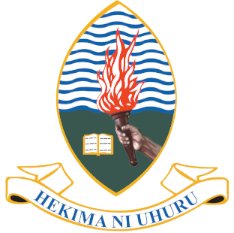Announcements
PhD Viva Voce
|
Candidate Name: |
Getruda Mamertus Challe |
|
|
Registration Number: |
2017-07-00148 |
|
|
University of Dar es Salaam |
||
|
School of Education |
Qualifications Attained:
Ms. Getruda Mamertus Challe is a PhD candidate (Course work and Dissertation) in the Department of Educational Foundations, Management and Lifelong Learning (EFMLL), School of Education at the University of Dar es Salaam (UDSM). Ms. Getruda holds a bachelor degree (Bachelor of Education in Arts - BED Arts) from the University of Dar es Salaam which she was awarded in 2008 and Master of Arts in Education (MA Education) Degree obtained in 2010 from the same University. Currently, Getruda is working at the National Institute of Transport, teaching education management courses. As a researcher, her research area of interest is emergency management in secondary schools.
|
Title of Thesis: |
Exploring emergency action plans for safe teaching and learning environment in government secondary schools in Tanzania. |
|
Date of Viva Voce: |
15th November, 2024 |
|
Venue: |
Board Room-SoED |
|
Time: |
10:00a.m |
|
Supervisors: |
Dr. Raymond Boniface & Dr. Mislay Moshi |
Abstract:
This study aimed at exploring emergency action plans for safe teaching and learning environment in government secondary schools in Tanzania. The study was motivated by the repeated occurrence of emergencies in secondary schools despite of the directives of the government in formulating strategies for emergency management especially fire emergencies in schools. The study focused on the way schools plan to respond to emergencies, implementation of the plans, stakeholders’ involvement in planning and implementation as well as challenges schools face in planning and implementation of Emergency Action Plans (EAPs). The study was guided by Kelly’s circular model which believes on individual’s ability to learn from the actual emergency and Manitoba’s model which insists in the formation of strategic plans to respond to emergencies. The study built its philosophical basis on the Interpretivism assumptions to draw information from secondary school communities affected by emergencies. Furthermore, the study was guided by the qualitative research approach and multiple case study design to generate information from HoSs, SBMs, teachers, parents, security guards and students in the purposeful selected secondary schools in Kagera region. Information was collected through interviews, documentary review and observations from a sample size of 48 participants. Purposive sampling procedure was used to select schools, heads of schools, SBMs, parents, security guards, teachers and students. Data were subjected to content and thematic analysis and findings are presented through text descriptions, quotations and photographs. Results showed that although emergencies such as fire outbreaks, earthquakes, strong wind, flood, diseases, lightning and robbery repeatedly hit schools, such schools seldom planned to prevent, prepare, mitigate and recover from emergencies. Also, it was noted that there was pitiable implementation of emergency action plans (EAPs) schools had, inadequate training on emergencies, inadequate safety facilities, poor parental involvement and absence of emergency management committee. Challenges that hindered effective implementation of EAPs included lack of accountability, financial limitation, limited school nurses and lack of school fences. The study concluded that schools are hit by natural and manmade emergencies in Kagera region. These include fire outbreaks, earthquakes, diseases, lightning, flood, strong wind, heavy rainfall and theft. Also, schools do not have well stipulated EAPs to respond to emergencies. Although, some schools have developed scratchy and tentative EAPs to deal with similar calamities if they were to happen again in the future based on the nature of emergencies that occurred before. Schools rarely implement EAPs due to scarce safety facilities, lack of emergency assembly points, inadequate school nurses and limited infrastructure, among many. The study recommends that there is a need for schools to have EAPs of their own. Indeed, for successful emergency planning and implementation of EAPs, there is a need to involve vital stakeholders such as teachers, parents and students. School community should be given training, workshops and seminars on how to respond to emergencies that are likely to hit schools. Moreover, the government through the ministry of education, science and technology has to finance secondary schools so that they purchase apt and adequate emergency safety equipment and employ adequate school nurses to deal with emergencies particularly those related to health problems.
|
No |
Name |
Designation |
Rank |
Unit |
|
Prof. Eustella Bhalalusesa |
Chairperson |
A/Professor |
SoED-EFMLL |
|
|
Dr. Nkanileka Mgonda |
Representing External Examiner |
S/Lecturer |
SoED-EFMLL |
|
|
Dr. Afrael Sarakikya |
Internal Examiner |
Lecturer |
SoED-EFMLL |
|
|
Dr. Boniface Raymond |
Candidate’s Supervisor |
S/Lecturer |
SoED-EFMLL |
|
|
Dr. George Kahangwa |
Head of the relevant department (or his/her appointee) |
S/Lecturer |
SoED-EFMLL |
|
|
Dr. Fortunatha Matiba |
Co-opted Member (appointed by College/School/Institute |
S/Lecturer |
SoED-EFMLL |
|
|
Dr. Ahadi Anania |
Co-opted Member (appointed by College/School/Institute |
Lecturer |
SoED-EFMLL |
|
|
Dr. Joel Kayombo |
Appointee of the Principal for PhD only) |
S/Lecturer |
DUCE-EFMLL |
Other Announcements
Wed, 06.Nov.2024 : PhD VIVA- 08th November-2024-Lucas RenatusWed, 06.Nov.2024 : PhD VIVA- 06th November-2024-Semunyu, Fatuma Yusuph
Wed, 23.Oct.2024 : PhD VIVA- 24th October-2024-Swaib Seguya
Fri, 11.Oct.2024 : PhD VIVA- 17th October-2024-Godrick Lyimo
Thu, 30.May.2024 : PhD VIVA- 5th June-2024-Alexander Marietha


